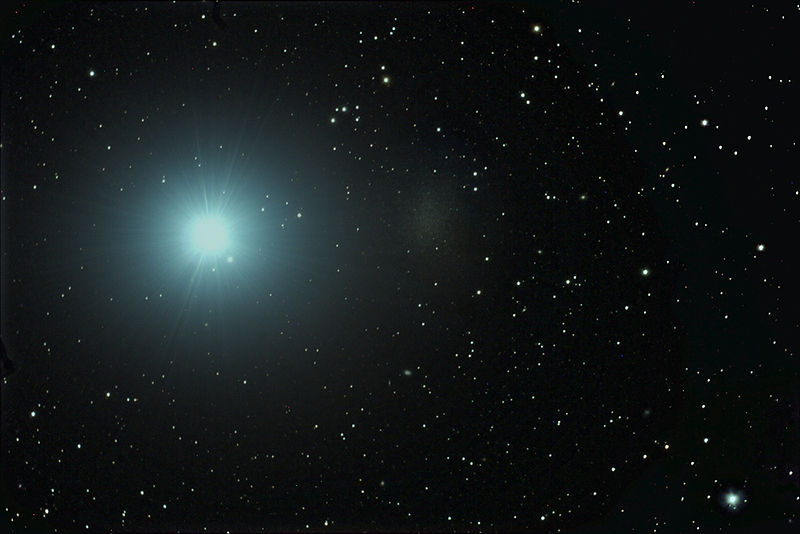
You sometimes hear the estimate that the mass of our galaxy is equal to several hundred billion suns. Now some astronomers are suggesting a mass for the Milky Way of 1.6 trillion suns. The estimate isn’t just for the Milky Way’s stars. It also includes the mass of our Milky Way’s invisible dark halo. It’s based on the first-ever measurement of the proper motion, or sideways motion along our line of sight, of a small galaxy satellite galaxy to our Milky Way. Ken Croswell reported on the role of this small galaxy – called Leo I – on December 3, 2012 in Scientific American.
How do you weigh a galaxy? One way is by observing other galaxies near our Milky Way. Our galaxy has some two dozen known satellite galaxies. If you knew the size of the orbits of these small galaxies, their speeds in orbit around our galaxy, and how long they take to orbit the galaxy, you could use the laws of physics to determine precisely both the mass of our Milky Way and the mass of each satellite galaxy. Unfortunately, our human lifespans are short in contrast to the vast lifespans and motions of galaxies. And although the galaxies move at speeds that are mind-bogglingly fast in contrast to, say, the speed of a car or a train or a jet, space is so vast and the distances in space are so great that astronomers have to work long and hard to obtain precise measurements of these high speeds.

That’s why one Milky Way satellite, in particular, has proven useful in measuring the Milky Way’s mass. It’s called Leo I, and it’s useful in part because it’s the most distant of the satellite galaxies (meaning that much, if not all of our Milky Way’s surrounding, massive dark halo might lie inside its orbit). Also, Leo I is moving relatively quickly, making its motion possible to measure. The Leo I galaxy is known to be racing away from us from its Doppler shift (a shift in spectral lines, indicating a forward or backward motion along our line of sight). If the Milky Way has enough mass, its gravity will hold this little galaxy in orbit as a satellite. But if the Milky Way is less massive, Leo I will break away from our galaxy and go its separate way in the universe.

The astronomers who spoke to Ken Croswell were unanimous in their praise of a new study by Sangmo Tony Sohn of the Space Telescope Science Institute and his colleagues. They used the Hubble Space Telescope to compare Leo I’s position in 2006 and 2011 with more than a hundred background galaxies to obtain the first measurement of the proper motion – or sideways motion along our line of sight – of Leo I.
Combining this new measurement with the Doppler shift of Leo I, astronomers were able to estimate that Leo I orbits the Milky Way at 200 kilometers per second. That’s fast! It’s nearly as fast as our sun orbits the Milky Way’s center, and yet Leo I is much farther away from the galaxy’s center than our sun, some 850,000 light-years away in contrast to less than 30,000 light-years for our sun (the sun’s distance from the galactic center is also uncertain).
For Leo I to move at the same velocity as our sun around the galactic center – yet be so much farther from the center – means the Milky Way must be more massive than previously believed. That’s where the 1.6 trillion solar-mass estimate comes in. It’s an estimate from Michael Boylan-Kolchin of the University of California, Irvine and colleagues, who worked with the new proper motion data.
Read more about this study in Ken Croswell’s article at Scientific American

Bottom line: Work by astronomers at University of California Irvine and the Space Telescope Science Institute have led to a new mass estimate for our home galaxy, the Milky Way. The new estimate suggests the Milky Way might be as massive as 1.6 trillion suns. That estimate, by the way, doesn’t mean the Milky Way has 1.6 trillion stars. It includes the dark matter halo thought to surround our Milky Way.











